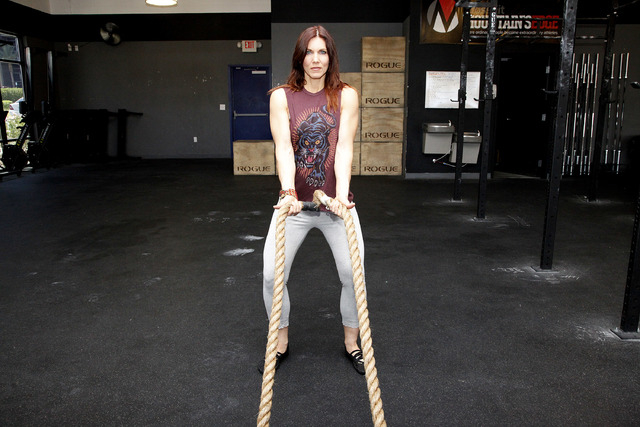Want to get lean and strong? Let me show you the ropes
Who would have thought that a long piece of rope could be fun and exhausting?
Battle ropes are a good conditioning tool. They get the heart rate up and turn your arms into motors for making waves.
They’re also a good warm-up or cool-down movement to help prime your muscles and flush out that lactic acid.
A battle rope uses one of my favorite stances, the athletic position, for its base of movement. The athletic position is important in sports. It creates awareness of a person’s body positioning. Incorporating it into workouts will help make it a default position.
A good athletic position means you are ready for movement, any movement — forward, backward, sideways or diagonally. It starts with the feet outside the hip width and toes straight. From there, hinge at the hips as if you were going to do a squat so the knees bend slightly. From here, contract the core by bracing for a punch to the gut. Then straighten the back by pulling the shoulder blades back.
This position is to be maintained at all times. If you feel it start to deteriorate during your battle rope set, fix it. This will help to keep you pain-free. If the core falls apart, the back will round and it may ache the next day. If the knees turn inward, the hips are not as stable as they could be.
Treat the athletic position like an isometric hold. As with the plank, you will build more strength in holding a favorable position than a less-than-optimal one.
You may have to get creative when anchoring ropes. The gym has many heavy and sturdy things to anchor the ropes to. Just don’t use a piece of equipment that someone is using as an anchor point. It is inconsiderate to say the least.
Also, make sure you are not in the way. Ropes are large and take up a fair amount of space. Use them to the side and not in a place others will have to double-dutch jump through just to get by.
Some gyms have designated anchor points and areas for ropes, which make things easy.
The anchor point’s height may differ depending on your anchoring object. I have used hundred-pound dumbbells on the floor as an anchor point and had it work well. I’ve also anchored the rope about knee-height and found it works just the same.
What matters most when doing rope drills is how well you can maintain the athletic position and the wave of the rope. The waves made by the motion of the arms tell you all you need to know about how well you are performing the drill.
If the pattern is a fluid wave that looks like a DNA helix, you are doing just fine. But if the pattern is not so pretty, you could use some improvement.
Make sure your whole arm moves from the shoulder and not just the elbow. This will make a pretty pattern. As athletes fatigue, they start using biceps curls to move the ropes and burn out faster.
If the wave pattern dies out before it reaches the anchor point, you need to add more power. Try for bigger arm motions to get that power all the way to the end of the ropes.
The cut-in and cut-out wave patterns featured today should look like a diagonal wave depending on which drill you are performing. As arms tire, the wave turns into circles. It is common for one arm to be perfect and the other to be a little wonky. With practice they will even out.
Rope drills can drain your energy quickly, so rest as needed. Give yourself 30 to 90 seconds to a few minutes to recover when you are starting out. Your body will adapt with just a few weeks of training.
Chris Huth is a Las Vegas trainer. He can be reached at 702trainer@gmail.com. Consult your physician before beginning any exercise program.




















